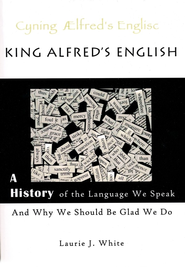I recently witnessed this conversation between a teen and his mother:
.
…“The main character divorced his wife and married another woman,” the teen announced after he read his book...
.“That’s not good,” his mother said.
…“But he had to, Mom. His wife was really awful! She treated him really badly.”
The son went on to tell his mother some of the hateful things the wife had done to her husband in order to explain why this man was justified in divorcing his wife. Anyone would agree that they were truly rotten things.
The exasperated mother calmly stated, “God hates divorce.”
Her son did not change his mind. “But he had to divorce her.”..
My friend was scrambling to figure out how her son could have viewed this divorce in a positive light when she had taught him otherwise.
.What had happened to make her intelligent son fall prey to a viewpoint unacceptable to his parents?
This blog is not about divorce. It’s about two methods authors use to influence our children’s minds and hearts.
.
1. Writers create empathetic characters.
No, that’s not pathetic characters. That’s empathetic, as in there’s something about this character that makes you care about him, makes you cheer him on, makes you want him to succeed. There’s something about him that makes you identify with him.
Writers work hard at making a character empathetic by giving him certain traits that readers can identify with and appreciate. After all, if the character is not empathetic, if there is no reason to care about him, we will stop reading.
What makes us care about him?
Is he humorous? Skilled? In danger? Brave? Has he been wronged? Is he emotionally wounded? Is he the underdog? Does someone in the story care about him? Is he taking care of another character—a dog, sister, extra-terrestrial, brother, friend, or even a cockroach (as in the movie WALL•E)?
Think of Bob Wiley in the movie What About Bob? Here is a neurotic, unbeautiful man who can’t hold down a job or maintain a healthy relationship, yet he is an empathetic character. Why? Because Bob is actively seeking help, is brave in trying to conquer his phobias, bonds with and helps “the fam,” and takes care of Gill the goldfish.
When the main character in The War of the Worlds whacks the curate over the head and leaves him for dead, readers defend the attack and still view the lead as empathetic. Why? Because suddenly he’s in danger; the Martians scuttle into the house looking for him. He runs. He hides. We hope he isn’t found and killed by being drained of his blood. Still, he just killed a guy.
The secret
In Fade In by Robert Berman, a book on writing screenplays, Berman describes how, in his example script, he wanted one married-but-divorcing husband to have an affair with a single woman. Because he wanted the viewer to like the husband, he gave the wife an alcohol problem but let the audience know that the guy still loved her.
However, Mr. Berman understood that the husband would look bad if he had an affair while he and his wife still loved each other and there was still hope for their relationship. So he decided to paint the wife as antagonistic, someone who was making the man’s life miserable and wasn’t about to change. That way, the affair was portrayed as justifiable, and the audience would view the man with empathy.
Watch any show in which a character does something morally questionable but is viewed as justified in doing it. Then comb through the events and find how the author makes the character empathetic, getting you on the character’s side even if you normally wouldn’t agree with the actions.
Berman’s example is not unusual. Books and movies are packed with this device. If you’ve ever read Edith Wharton’s Ethan Frome, you will recognize this device in action when you feel the pull to approve of the main character having an affair. He’s just so dog-gone lonely, generous, and has such a nasty wife. Which brings us to the second point . . .
.
2. Writers narrow down the options for the main character.
Let’s look at The War of the Worlds again. The unnamed main character has been saddled with a churchman who is out of his mind. Exhausted by running from the attacking Martians, both men take shelter in an abandoned house and wake up to find that the Martians have begun mining operations just outside the house.
H. G. Wells, the author of The War of the Worlds, hated Christianity and wrote in his autobiography that he wanted to “push it off the earth, no less.” He called the apostle Paul a “prevaricator,” a liar. When we know this about Wells, we understand why he chooses the unstable man to be a curate or a churchman.
So, the main character and the churchman wake up, and the curate starts babbling. If he does not keep quiet, he will give away their position to the enemy due to his extreme fear and loud outbursts.
The character must make a choice.
The two men are now in grave, life-threatening danger. The Martians have turned their attentions to them. What is the main character to do?
Wells has just narrowed down the options for the main character: kill the curate to protect himself or be killed by the Martians.
EVERY effective author narrows down the options for the main character. After the character makes his choice, we feel that he had to do it that way. Why? Because, in the world of the story, he has only two choices.
Questions to discuss with your children:
1. Do any of the protagonists do anything that would seem morally questionable outside the context of the book (like killing someone or having an affair)?
2. How does the author make the protagonist empathetic?
3. What other actions are available to the character?
Children and teens often are surprised to learn these facts:
- The story did not spring to life spontaneously.
- Things do not just happen in stories.
- There’s always a man (or woman) behind that curtain, pulling the levers and making things occur.
Justifying a character’s actions by creating an empathetic character and narrowing down the options is the legitimate work of a careful author.
The legitimate work of a careful reader is to be discerning. Put the character’s rationale and actions next to the truth in the Bible to see how the story’s worldview compares with a godly worldview.
An active reader observes and recognizes what the writer is doing and is not easily deceived. Teach your students to be on the lookout for clues, to be active readers. And be discerning about what you let them read.
Yours for a more vibrant writing class,
 .
.











